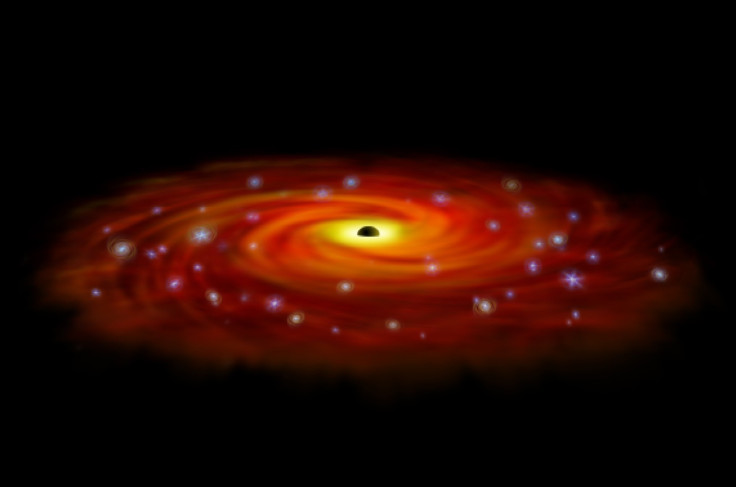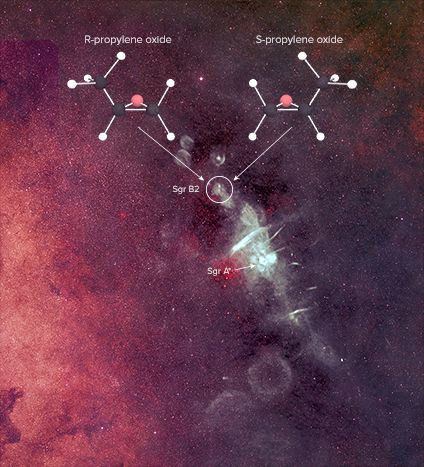Molecules Essential To Life Found In Deep Space For The First Time

Some organic molecules display a chemical property known as chirality, which allows them to have mirror-image versions of themselves, like a pair of human hands. These chiral molecules are essential to biology and life as we understand them, and have been found in meteorites on Earth, as well as in comets in the solar system.
However, in the first discovery of its kind, scientists have found complex organic chiral molecules in interstellar space, far, far away from Earth and the solar system, near the center of our galaxy, the Milky Way, on whose fringes we sit.
“This is the first molecule detected in interstellar space that has the property of chirality, making it a pioneering leap forward in our understanding of how prebiotic molecules are made in the universe and the effects they may have on the origins of life,” Brett McGuire, a chemist and Jansky postdoctoral fellow with the National Radio Astronomy Observatory (NRAO) in Charlottesville, Virginia, and author of a paper published on the study in the journal Science, said in a statement.
The molecule, propylene oxide, was found “in an enormous star-forming cloud of dust and gas knows as Sagittarius B2,” according to the statement released Tuesday by the NRAO. The discovery was announced Tuesday at the ongoing 228th meeting of the American Astronomical Society in San Diego.
Brandon Carroll, a chemistry graduate student at the California Institute of Technology in Pasadena and co-author of the paper with McGuire, said: “Propylene oxide is among the most complex and structurally intricate molecules detected so far in space. Detecting this molecule opens the door for further experiments determining how and where molecular handedness emerges and why one form may be slightly more abundant than the other.”
The finding is part of the Prebiotic Interstellar Molecular Survey, and primarily used data from the National Science Foundation’s Green Bank Telescope in West Virginia. Supporting data taken with the Parkes radio telescope in Australia was also used.

More than 180 molecules have been detected in deep space already, but complex molecules, like propylene oxide, are more difficult to detect. Of the three spectral lines that researchers needed to identify, only two could be observed from West Virginia due to satellite radio interference in the Northern Hemisphere, which is why the Parkes radio telescope was needed to verify the finding.
Scientists still don’t know if the molecules observed are left- or right-handed, since the chemical and physical properties of both are exactly the same. If they could determine the abundance of one variant over the other, scientists might be helped in understanding why all living things on Earth use only one-handedness — a trait called homochirality — and how life, as we understand it, came to depend on it.
© Copyright IBTimes 2024. All rights reserved.





















